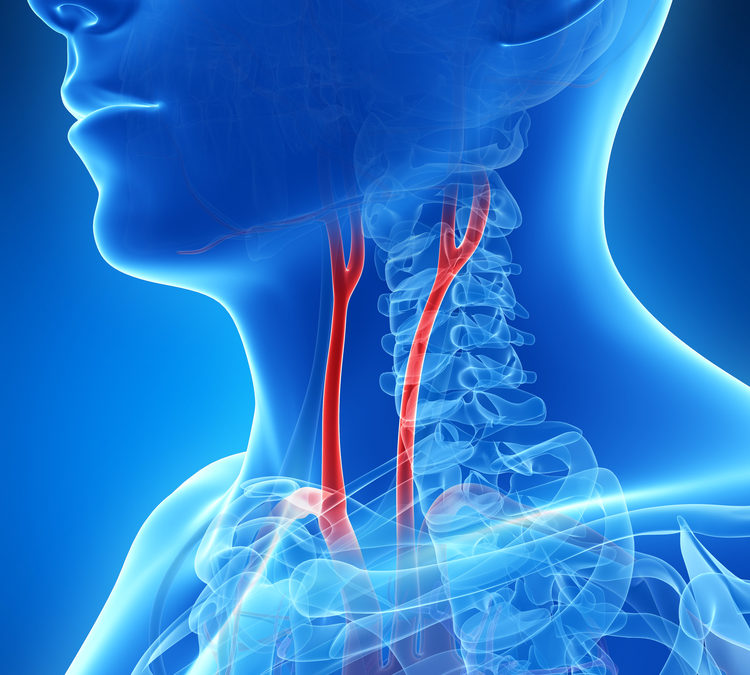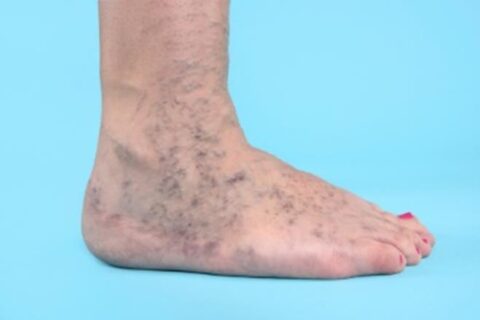Treatment for Carotid Artery Disease

Carotid artery disease is a specific type of vascular problem in which plaques (waxy, fatty deposits) build up on the inside of the vessels that carry blood to the brain, face, neck, and scalp. Plaques cause the carotid arteries to narrow, which can reduce blood supply to the brain. If the plaques break free, they can completely cut off the flow of blood to the brain and cause a stroke. If the plaques become damaged, a clot can form on them and completely cut off blood supply to the brain as well. (https://www.nhlbi.nih.gov/health/health-topics/topics/catd). Fortunately, carotid artery disease can be treated in several different ways, often before it causes a serious problem.
Lifestyle Change
It is important to note that carotid artery disease is a “silent disease.” That means that it can be getting worse even though you may not have any symptoms. In fact, the first symptom of carotid artery disease could be a stroke. Routine physicals and careful measurement of things like blood cholesterol levels can help identify carotid artery disease early in its course when changes in diet, exercise, and smoking habits can all have an impact on disease progression.
Just as with coronary artery disease, carotid artery disease can be treated or prevented by reducing intake of fatty foods, increasing exercise, losing weight, reducing alcohol consumption, lowering blood pressure, and stopping smoking. Reducing cholesterol intake and getting exercise are two of the most important things a person can do for vascular health. These lifestyle changes can protect the heart, brain, and other organs from serious injury.
Medication
If you have been diagnosed with carotid artery disease and it isn’t responding to lifestyle changes, you may want to consider medications that lower blood pressure, reduce cholesterol levels, and thin your blood. Examples of medications that are often used to reduce the risk of a stroke and treat carotid artery disease include:
- Antiplatelet medications – Drugs like aspirin and Plavix make it harder for the blood to clot and thus reduce the risk of a clot forming on a damaged plaque. They can reduce your risk of first stroke and recurrent stroke.
- Anticoagulants – Blood thinners, like warfarin (Coumadin), slow down the clotting process and make it harder for a clot to form. They are often used in people at high risk of clots and thus stroke.
- Statins – Stains are drugs used to lower cholesterol levels. They can drastically reduce plaque formation and, in some people, make it possible for plaques to slowly dissolve over time.
- Anti-hypertensives – Medications to lower blood pressure reduce the strain placed on arteries and thus reduce the risk of both plaque formation and plaque damage.
In the last 5-10 years, whole new classes of medications have been developed to treat vascular diseases like carotid artery disease. These medications are safer and more effective than most older medications and are well-tolerated by most people. There is a great deal of research into treating and preventing vascular disease, so new treatment options are frequently coming to market.
Angioplasty and Stenting
If your carotid artery disease is moderate to severe, you may be referred to an interventional cardiologist or vascular surgeon to have angioplasty and/or stenting. In angioplasty, a balloon is inserted into your blood vessels and then inflated to widen the artery and improve blood flow. In most cases, a stent is then placed in the vessel to keep it open and to stabilize plaques so that they do not break free or cause a clot (http://www.secondscount.org/heart-condition-centers/info-detail?cid=4941c4bf-aa97-4214-b15a-436e49154e4d#.V9ajjpgrJ2Q). Angioplasty and stenting are incredibly common, minimally invasive, safe procedures often referred to as “caths.”
Carotid Endarterectomy
In severe disease, a vascular surgeon may perform a carotid endarterectomy. In this procedure, blood flow is diverted (similar to cardiac bypass surgery) and the carotid artery is cut open. The surgeon removes the plaque entirely, leaving behind a pristine blood vessel, and sews the artery back up. In some cases, a patch is made using a vein from elsewhere in the body or by using a man-made polymer. Patients usually go home just a day or two after this procedure and are back to normal activity in a few weeks (https://www.nhlbi.nih.gov/health/health-topics/topics/carend).
Necessary Changes
No matter what treatment you undergo, your doctor will recommend that you make the lifestyle changes listed above. In fact, even healthy people can benefit from reducing fat and cholesterol intake, increasing exercise, and avoiding tobacco. It is better, after all, to prevent carotid artery disease than to undergo treatment for it. That said, if you do require treatment for carotid artery disease, rest assured that the medications and procedures discussed above are so common that their use has become routine. They are safe, effective, and can save your brain from the serious effects of a stroke.


